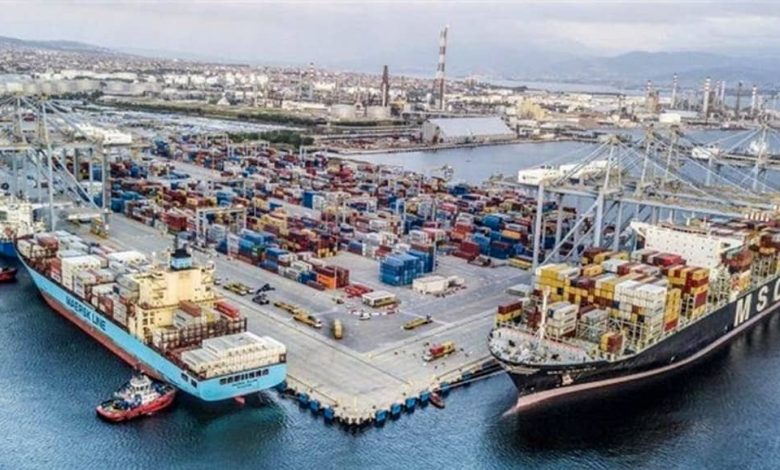Iran’s Economy Shrinks As State-Run Smuggling Networks Flourish

iranian port smuggling
Written by
Mansoureh Galestan
On Monday morning, June 5, a young ‘kulbar’ (poor locals who carry heavy loads for a living) named Hoshiar Hassanzadeh was shot by the Iranian regime’s cruel border guards in Western Iran. Despite carrying no illicit items in his backpack, this 20-year-old was deliberately targeted and fatally shot in the head and chest.
Subsequently, on June 6, the Mehr state news agency shed light on the issue of smuggling within Iran. An individual claiming expertise in combating economic corruption expressed valid concerns regarding the inadequate performance of the anti-trafficking headquarters. This expert estimated that the turnover generated by smuggling activities in Iran has reached an astonishing 1,000 trillion tomans. Additionally, annual statistics indicate that the detrimental impact of this phenomenon ranges between 15 and 21 billion dollars. The expert’s warning about the potential control of the country’s market by smugglers should not be disregarded, urging the need for improved procedures.
It is essential to acknowledge that the “current procedure” highlighted by the expert is not a recent occurrence but rather has a longstanding history. On July 5, 2012, the ISNA news agency published an article titled “Troublesome Wharves,” emphasizing the significant number of wharves operating without customs supervision. Out of a total of 201 wharves across the country, only 20% are subject to customs oversight, leaving the remaining 80% to operate without adhering to proper customs regulations. This concerning statistic indicates that a mere 40 wharves can be considered legal.
Furthermore, on July 10, 2019, the Fars state news agency acknowledged the presence of various smuggled goods entering the country through land, air, and sea routes, including official paths. This illicit activity has profoundly impacted employment and domestic production, posing significant challenges to the nation’s economy.
However, it becomes apparent that the expert’s concern about the dominance of smugglers in the country’s market is not baseless or irrelevant. Referred to as the “smuggler brothers,” a metaphorical term alluding to the influence of the IRGC, these entities reportedly control a significant portion—approximately one-sixth—of the country’s total liquidity, according to a government expert. Their grip on the market has been firmly established for a considerable period.
"Over the years, the #IRGC has expanded its #economic activities, establishing numerous semi-private companies to circumvent sanctions imposed on the regime ruling #Iran and engaging in large-scale smuggling operations," writes @shahriarkia https://t.co/genvxrs91b
— NCRI-FAC (@iran_policy) May 18, 2023
In light of the aforementioned circumstances, it is crucial to address the pressing issue of smuggling and its implications. The prevalent incidents and the substantial control exercised by the “smuggler brothers” serve as a reminder of the challenges faced by the country. Efforts to combat smuggling and protect the integrity of the market are imperative for sustainable economic development and the well-being of the nation.
In April 2023, Mehdi Nasiri, a former editor-in-chief of the Kayhan newspaper, drew attention to the influence of the “smuggler brothers.” He emphasized the impact of their activities by stating, “For those who fail to perceive the damage, your lives remain unaffected. The courageous children of your Supreme National Security Council, who takes a leading role in these narratives, serve as Iran’s primary oil exporter, accounting for 40% of the country’s oil exports and earning a million dollars per day. How would Mr. Shamkhani’s son be harmful to you? This prosperous foreign policy has proven advantageous for you and your children.”
Moreover, during a conversation with the regime’s Aflak network on June 8, Yaser Jebreili, a former state official, acknowledged the significant profits amassed by official currency smuggling gangs. He revealed the involvement of specific companies in currency ownership, with one company alone generating a net profit of 108 trillion tomans within a single year. This staggering figure equates to the monthly 45,000-toman subsidy for the entire Iranian population over a two-year period, vividly illustrating the magnitude of this issue.
The testimonies provided by insiders within the state shed light on the extensive problem at hand and the immense profits derived from these illicit activities. It is evident that smuggling networks, with their abundant resources and far-reaching influence, continue to thrive, further exacerbating the economic challenges faced by the country.
Despite Khamenei’s previous acknowledgment that smuggling accounted for 25 billion dollars, the recent claim of 20 billion dollars in smuggling does not indicate a decrease in its share of the country’s economy. According to a report by the state-run Eqtesad News on March 29, Iran’s economy has witnessed a significant decline over the past five years, with its volume plummeting from approximately 500 billion dollars to below 200 billion dollars. Consequently, the proportion of smuggling has effectively doubled in relation to the overall size of the economy.
Iran Border patrols kill two civilians in Sistan and Baluchestan
Consequently, as the country’s economy continues to shrink, the profits, corruption, and windfall capital within the ruling predatory foundations are growing. This troubling scenario exemplifies how corruption has become deeply entrenched in the nature and structure of the regime, resulting in the effective control of the country by ruling mafia-like groups. Regardless of the circumstances, the outcome remains distressingly consistent: the regime’s leaders and elites accumulate wealth while poverty worsens, plunging the masses of hungry people into further misery.
In light of this stark reality, it becomes apparent that the economic challenges within a corrupt economic dictatorship cannot be resolved through purely economic measures. Instead, a comprehensive political solution is imperative, one that entails overthrowing the rule of the corrupt mullahs and addressing the systemic issues deeply ingrained within the core of the regime.

